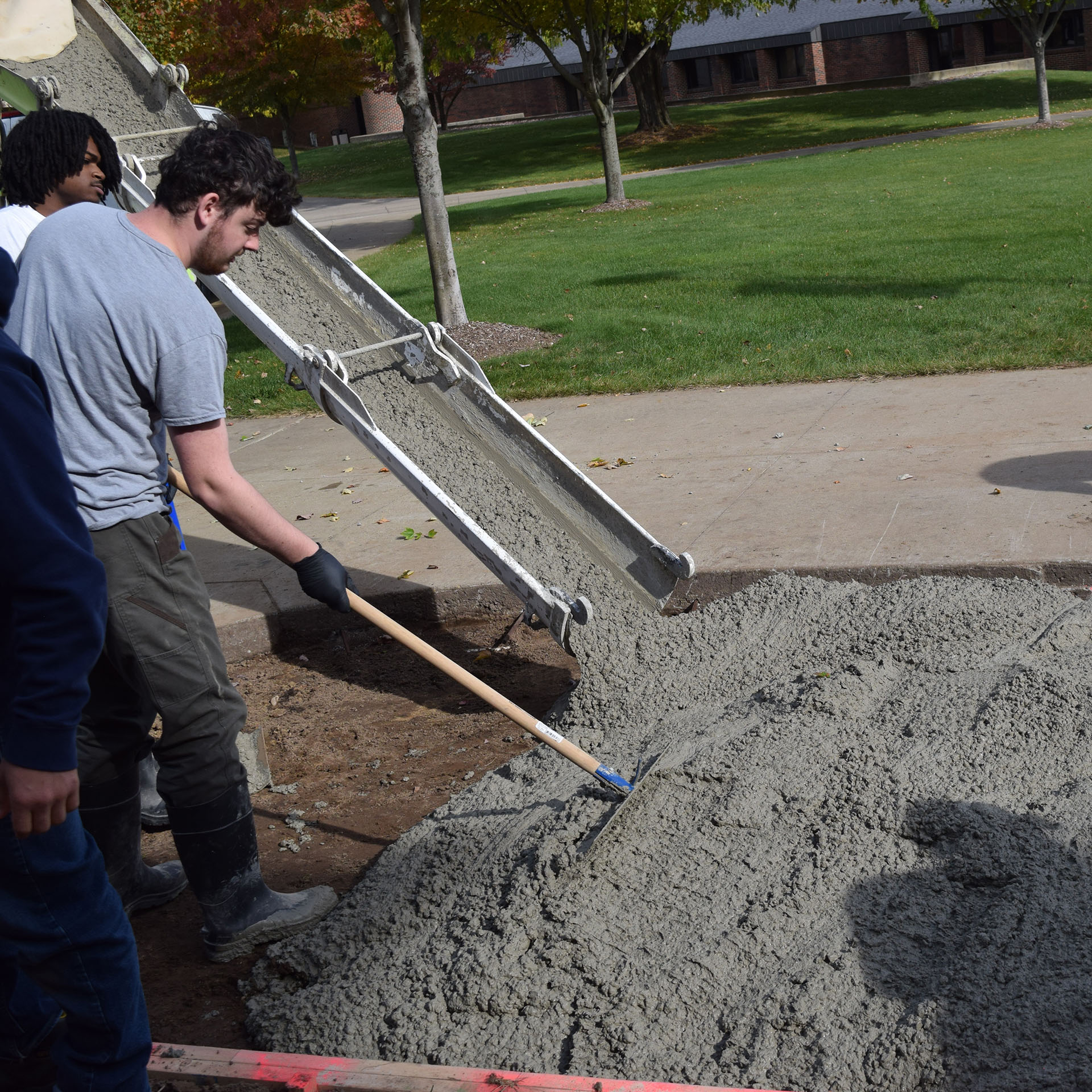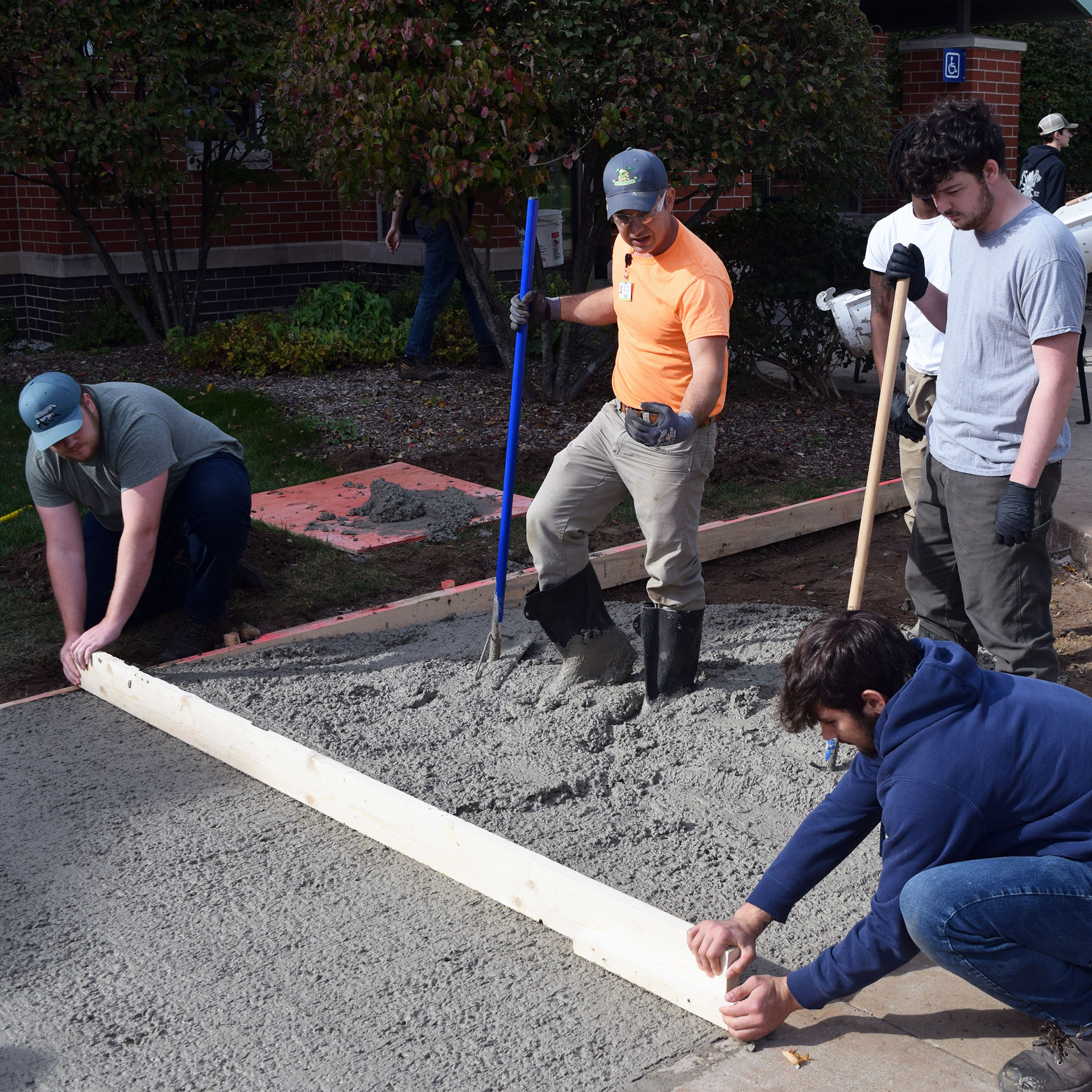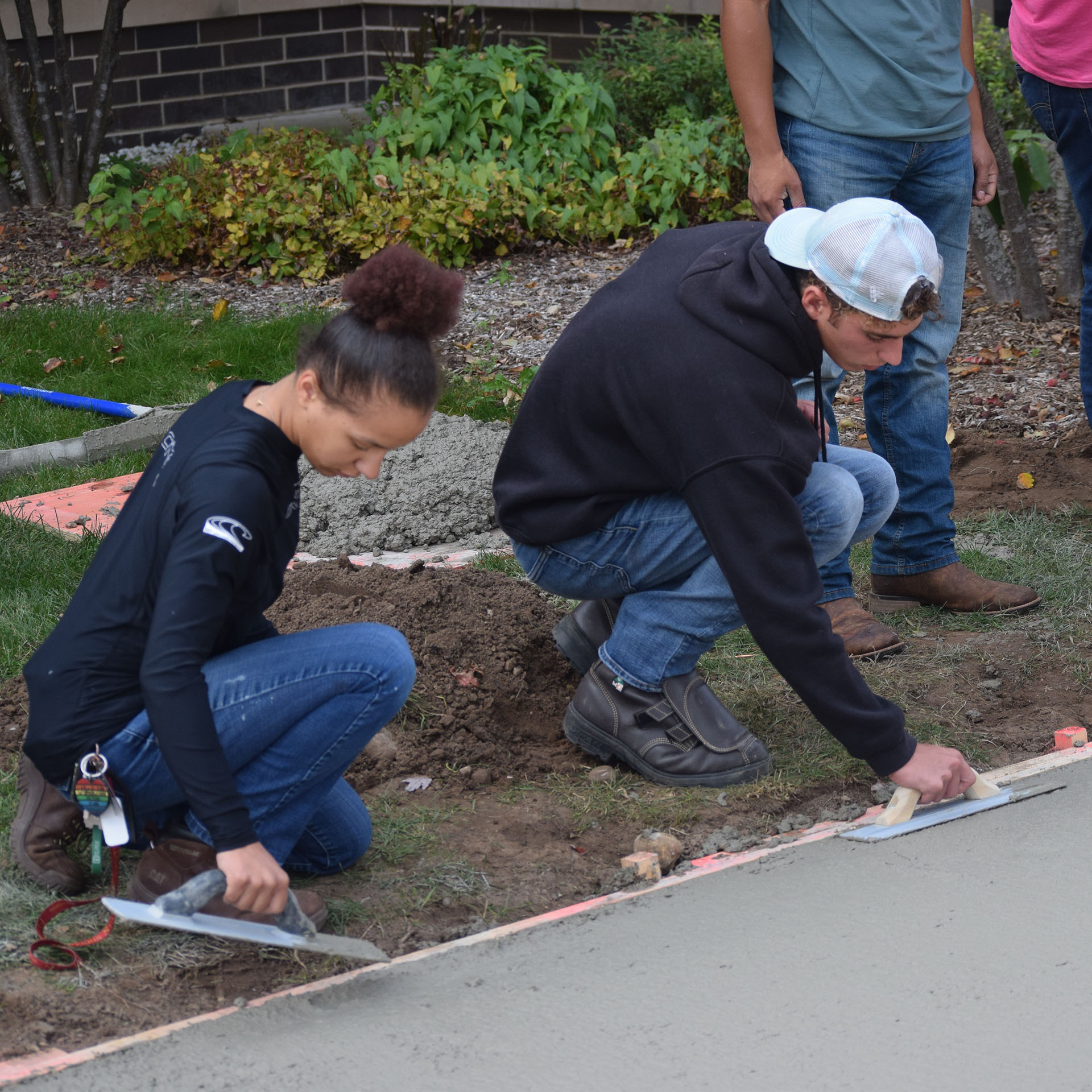
News
SMC Construction Students Pour It On
Published on October 23, 2024 - 3 p.m.
Southwestern Michigan College Construction Trades Green Technology students collaborated this week with the Building and Grounds Department to pour two sidewalks.
One sidewalk is in front of Thomas F. Jerdon Residence Hall. The other is outside the Student Activity Center of the Charles O. Zollar Building.
“Usually we only get to do one pour, but Maintenance had a need. This provides us with an opportunity to get some meaningful ‘mud’ down,” Associate Professor John Tinker said while waiting for the arrival Oct. 22 of the cement mixer from Dave’s Concrete Products in Lawton.
“We did one for Automotive a couple of years ago, and we did two on the end of the Kairis Building for our storage building and for our solar kiln,” Tinker said. “It gives students buy-in on something that’s going to last. By Zollar they wanted to widen the sidewalk, but they couldn’t get a contractor. Everyone’s too busy.”
Pouring concrete closes out lengthy classroom preparation in building layout and exercises outside the Jan and A.C. Kairis Building squaring up mock buildings and deciding whether to cut or fill the ground to get it to a specified elevation.
“Then we do test concrete pours in the lab,” Tinker said, “and what slump is and why slump is important.”
Concrete slump is a measure of the consistency of fresh concrete before it sets. It's a test that measures how much a pile of concrete settles after a cone is filled with concrete, then removed.
The distance concrete settles is called the slump, and it's measured in inches.
Concrete slump is important because it indicates how easy concrete will flow and how workable it is. A higher slump means the concrete is more fluid. A lower slump means it's less fluid. A slump of about four inches is considered ideal.
Concrete slump determines the correct water content in a batch.
A batch with too much water will have a high slump and will likely be weak when it's fully cured. Adding too much water to concrete increases the risk of cracks.
“We did eight test pours in the classroom,” Tinker said. “To give concrete tensile strength, you have to add metal reinforcement — welded wire fabric or rebar.”
“We let pours cure for five days, then test them with increasing amounts of force to see what breaks,” Tinker said. “CONS 114 is intermediate construction practices. Eight-credit, 10-contact-hour class. I have the first-years 2 1/2 hours a day, four days a week. We cover everything from tool safety right up through floor, wall and roof framings for the building we build in the lab. After this, the sawmill.”
“We try to give them good hands-on experience so they can make decisions about their futures. They can say, ‘I didn’t just learn the theory, I applied the theory more than once and I do or do not want to pursue this’ because construction takes in lots of parts.
“You could be a trim carpenter or a framer your whole life. Or you could do concrete flat work or poured walls. Or shower tiles and backsplashes. Or hardwood floors. I had one student who hates concrete and didn’t like insulation, but framing motivated him.
“CONS 131 and 132, interior and exterior finishes, are hands-on lab/lecture courses that allow them to apply the theory and to get a feel for what they’re doing,” Tinker said. “Nobody is meant to be an expert from this program, but they will have solid theoretical footing in construction and experience in theory we discuss. It’s up to them to pursue the passion that comes from that.”
Tinker could be talking about South Haven’s Camila Pereznegron. While watching intently, concrete doesn’t weigh heavily in her career plans.
Pereznegron, who started college in biology for animal science, now wants to start her own construction company for trim carpentry.
In December, “I want to get my CDL (commercial driver’s license). I flipped houses with my dad, which interested me a lot. I’ve been doing this for three years. I’m a hands-on, visual person, so I’m gaining a lot of experience, and I took a small business management course.”











